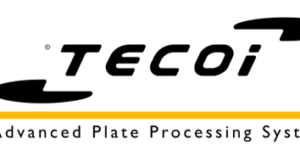NON-CONTACT 3D IMAGING SYSTEM COLLECTS MILLIONS OF POINTS IN SECONDS
This new inspection system from FARO Technologies uses patented Accordion Fringe Interferometry (AFI) technology that is ideal for quality control, reverse engineering and rapid manufacturing of complex shapes or large, smooth surfaces.
Posted: May 18, 2011
This new inspection system uses patented Accordion Fringe Interferometry (AFI) technology that extends traditional linear laser interferometry to three dimensions, capturing complete, detailed image of an object within its half-meter field of view.
The AMP 3D Imager from FARO Technologies, Inc. is a high-performance, non-contact 3D imaging system that is capable of collecting millions of points in just seconds. The instrument is designed for parts with complex shapes or large, smooth surfaces due to its ability to measure a large surface area in one shot. With the click of a button, it captures the complete, detailed image of the object within its half-meter field of view. This system is the perfect tool for applications in quality control, reverse engineering and rapid manufacturing.
The AMP improves the measurement of dark and shiny parts that are often missed by optical systems.The key to achieving such high accuracy is the advanced technology used by the system: Accordion Fringe Interferometry (AFI). “AFI uses lasers to generate infinitely focused fringe patterns that are projected onto the part,” said Chuck Pfeffer, FARO director of product management, 3D imaging. “When the fringes are captured with the the high-resolution camera, a highly accurate point cloud is created, generating a true representation of the object. It is the accuracy of these fringes that sets the AMP apart.”
AFI is a patented laser projection technology that extends traditional linear laser interferometry to three dimensions. The original work on this technology was done at the MIT Lincoln Laboratory outside of Boston, MA. MIT Lincoln Laboratory is the federally funded research and development center of the Massachusetts Institute of Technology (MIT).
AFI: PRINCIPLES OF OPERATION
AFI employs light from two point sources to illuminate an object with an interference fringe pattern. A high-precision digital camera is used to record the curvature of the fringes from a viewpoint offset from the projector. The degree of apparent fringe curvature coupled with the known geometry between the camera and laser source enable the AFI algorithms to digitize the surface of the object being imaged. AFI-based imagers record an X, Y, Z surface point location for every pixel in the camera.
This technology offers many advantages over “white light” scanners, which include less sensitivity to ambient light variations, excellent ambient light noise immunity, super accurate fringe patterns, infinite projector depth of field, enhanced ability to image machined (shiny) surfaces, and enhanced ability to capture images without targets and photogrammetry systems.
Because AFI employs laser light at a wavelength of 658 nm, a filter can be used to block out unwanted light, greatly reducing the influence of ambient lighting conditions and reflections in the measurement area.











